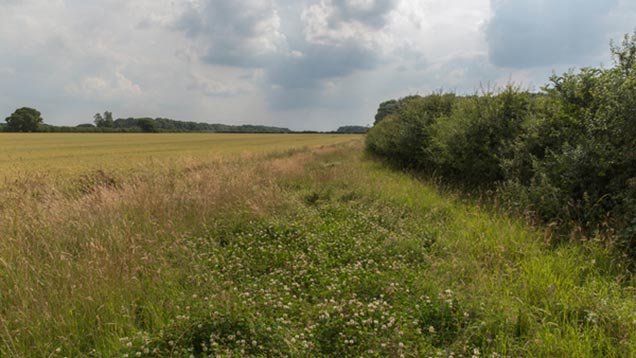Beginner’s guide to the Countryside Stewardship Scheme
 © Tim Scrivener
© Tim Scrivener Farmers in England are grappling with the new Countryside Stewardship Scheme application process.
Alice De Soer from the Central Association of Agricultural Valuers (CAAV) gives a guide to some of the basics for mid-tier applications.
What is Countryside Stewardship (CS)?
It’s England’s single integrated agri-environment scheme that replaces Environmental Stewardship (ES), England Woodland Grant Scheme (EWGS) and capital grants under Catchment Sensitive Farming.
It has three strands – higher tier, mid-tier and capital grants.
Mid-tier is competitive, so applications will be scored and not everyone who applies will be successful.
See also: Tips on how to apply for mid-tier stewardship
How long are CS agreements for?
Most will be for five years, but capital grants will usually be for one to two years.
Are there monthly start dates for CS agreements?
No, there is a single annual start date of 1 January. Successful applications submitted by 30 September 2015 will have an agreement start date of 1 January 2016.
Am I eligible to apply?
You need to have “management control” of land for the full five years of the CS agreement.
If you’re an owner occupier, a tenant (with an AHA tenancy or an FBT) or a landlord, you should be eligible.
If your tenancy won’t last for five years from 1 January 2016, your landlord can countersign your application.
What land is eligible?
Any agricultural area – so arable, permanent grassland and permanent crops; woodland (subject to minimum thresholds); and protected sites such as Sites of Special Scientific Interest (SSSIs) and priority habitats/species.
Must I include all of my land in the CS application?
No. You can choose which fields to include, but if you’re using rotational options all of the land that will be used over the five years of the agreement needs to be included.
My land is already in an ELS/EWGS agreement, is it eligible for CS?
If the ELS or EWGS agreement doesn’t end until after 1 January 2016, it won’t be eligible for CS until that agreement ends.
If the ELS or EWGS agreement will end by 31 December 2015, that land can be included in a CS application this year because it won’t overlap with the CS agreement.
Is there a minimum area for mid-tier CS?
No, unless you’re including Organic Conversion and Management options when there must be at least 5ha. A mid-tier agreement must have a minimum value of £1,000 a year.
Can I use CS option land as EFAs for my 2016 Basic Payment Scheme (BPS) application?
Yes, but 19 CS options overlap with ecological focus area (EFA) requirements.
As you can’t be paid twice for doing the same thing, your CS payment for those options would be reduced.
This only happens if you use the land under one of those CS options for EFA – you could put your EFA elsewhere.
I claim BPS on some rented land, but my landlord wants to apply for CS on that land, is that possible?
Where two people use the same land at the same time to claim two different schemes, it is known as dual use.
This is allowed under ES, but Defra hasn’t made a decision yet about CS.
If it isn’t permitted under CS, only one person will be able to claim the land.
When can I apply?
The application window opened on 1 July and closes on 30 September 2015.
How do I get a CS application pack?
Phone Natural England on 0300 060 3900 or email enquiries@naturalengland.org.uk.
Give them your name and address, SBI, CPH (Holding) number(s) and the field parcel reference numbers for all of the land you might include.
You also need to be registered on the Rural Payments system.
Where can I find guidance on applying?
All of the guidance on applying is available on the Gov.uk website. There is a CS manual, terms and conditions and guidance on options and capital items.
A sample mid-tier application form and guidance on how to complete it are also available.
How can I improve my application’s success?
Look at the Statement of Priorities and use the interactive targeting priorities maps on the Gov.uk website to help find the main environmental priorities for your farm.
Choose the options and capital items that best match these priorities.
Choosing high-priority options will score more. Increase your score by including the wild pollinator and farm wildlife package or getting a catchment sensitive farming officer endorsement.
How will I know if I’m successful?
Natural England should offer you an agreement by mid-November and you must return the signed agreement by 15 December 2015.
If an application is rejected, Natural England should write to explain why. You can apply again.

